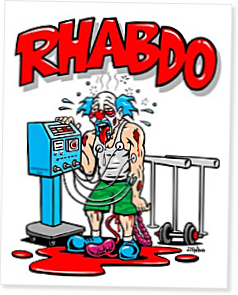KIDNEYS MEAN SERIOUS BUSINESS!
A 28 year old man, presented with few episodes of vomiting, severe generalised weakness, abdominal pain and fever for a day. On clinical examination all his vital parameters were stable, looked a bit dehydrated and systemic examination was normal.
Admitted him for giving hydration and maybe treat a possible abdominal infection. Blood work up was sent. His vomiting settled within few hours of giving anti emetics, abdominal pain had reduced. He was looking lot better in few hours.
Mean while his blood work up was back, his serum creatinine( marker of kidney function) was 4.2 (normal up to 1.2), it was significantly elevated suggesting kidney disease.
I almost leaped into patient's room, taking history all over again.
Kidney diseases are classified into acute kidney injury and chronic kidney diseases. It is absolutely important to ascertain which type of kidney disease the patient has. Acute kidney injury is abrupt loss of kidney function within few hours or few days and can lead to severe life threatening complications, if not treated appropriately can be fatal in some cases and can become chronic kidney failure. Chronic kidney disease is characterised by gradual loss of kidney function over time, once they are in this stage, there is no cure and leads to significant morbidity and complications.
This patient did not show any signs of chronic kidney disease like high blood pressure, anaemia or small kidneys on the scan. Presumably acute kidney injury.
Acute kidney injury can be because of multiple causes, step by step we started looking for the possible causes. Patient had not taken any pain medications, history of fever just 1 episode lasting for few hours, he was passing good amount of urine, we were tracking it every hour. The most useful test in acute kidney injury is looking at the humble urine sample, thought we might some protein leak/blood/infection. His urine routine came back perfectly normal. Ultrasound abdomen did not show any blockage/infection. Not clear what could be the possible cause of kidney injury, sent for further workup.
Patient started feeling better, there was no further episodes of fever or vomiting. His urine output continued to remain good, vital parameters, potassium levels continued to be normal. He was continued on supportive therapy hoping that kidney functions would get better too.
The next day his serum creatinine jumped up further to 5.8, a very steep rise indicating rapidly declining kidney functions and we were nowhere close to the diagnosis. Further work up for other causes looking for vasculitis, glomerulonephritis and few other causes came back negative. Patient's condition continued to remain stable but his potassium levels were slowly climbing up.
The patient remained calm and swore he is feeling better and just wants to go back home. Same evening his creatinine jumped up further to 6.2, and was planned for renal biopsy the next day.
It was very unsettling, I didn't even know what should I look for on the biopsy.
I went back to the patient to start all over again, may be there is a clue. History and clinical examination has always come to my rescue whenever I was not clear.
Patient repeated the same story again bit more frustrated this time. I asked him "how were you feeling the day before it started??"
He said he was feeling very good. He was beaming with pride, he said he played kabbadi the entire day and his team won the game. I asked him if he played frequently, he said no he was playing almost after a year and was happy their team won!
Well, I won too!! I got my answers, his CPK( Creatinine phosphokinase) the enzyme which is present in skeletal muscles, heart muscles and brain, leaks into blood in case of an injury. His CPK levels came back to be very high 15,000mcg/lt. Normal values are within 150mcg/lt.
Diagnosis is acute kidney injury due to RHABDOMYOLYSIS.
Rhabdomyolysis is breakdown of skeletal muscles, sometimes the by products of the breakdown, a protein called myoglobin can be released into the blood in massive quantities and cause tubular obstruction or direct nephrotoxicity leading to acute kidney injury. While the condition has been commented on throughout history, the first modern description was following an earthquake in 1908. Important discoveries as to its mechanism were made during the Blitz of London during second world war in 1941.
Years ago, during my residency days I remember seeing a patient who came with muscle pain and vomiting found to have kidney injury, he had rhabdomyolysis induced kidney injury needing dialysis. It was after he did 150 pushups on his first day at the gym.
With more and more people hitting gym and trying out new exercise routines like gruelling strength training, cross fit training and high intensity cardio training, I want to spread awareness regarding this rare but a serious condition.
Rhabdomyolysis is characterised by classic triad of muscle pain, generalised weakness and dark colored urine(tea colored) but in practice can present with non specific symptoms like fever, nausea and vomiting like in this patient.
Here are few tips to prevent rhabdomyolysis:
1. Gradual exposure to high intensity training.
2. Hydrate before, during and after work out.
3. Beware of eccentric movements while strength training.
4. Listen to your body- if you develop severe persistent muscle pain, swelling, passing dark coloured urine check with the doctor immediately.
KIDNEYS MEAN SERIOUS BUSINESS!!!
As for my kabbadi player, lucky enough did not require dialysis as he was passing good amount of urine but required hospitalisation for about a week for monitoring and supportive therapy. His creatinine returned to normal after about 6 weeks.
 |
| Image to ponder over RHABDO(Google source) |